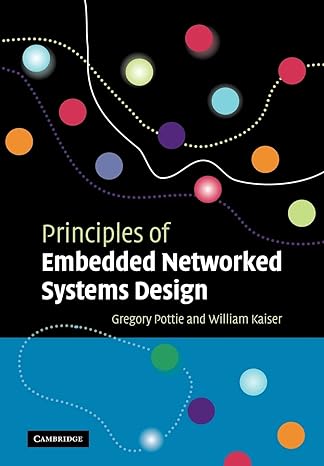TOA with low-cost clocks In order to make accurate range measurements in a GPS system, the receiver
Question:
TOA with low-cost clocks In order to make accurate range measurements in a GPS system, the receiver and satellite both need clocks that can be synchronized down to a nanosecond, which potentially could require atomic clocks not only on all the satellites, but also in the receivers. However, atomic clocks are far too expensive for everyday consumer use.
GPS sidesteps this problem by measuring the distance to four instead of the minimum three located satellites. Every satellite contains an expensive atomic clock, but the receiver uses an ordinary quartz clock,which it constantly resets. With four range measurements, the receiver can easily calculate the necessary adjustment that will cause the four spheres to intersect at one point. Based on this, it resets its clock to be synchronizedwith the satellite’s atomic clock, thus providing time aswell as position.
Explain mathematically how this fourth measurement provides these benefits.
Step by Step Answer:

Principles Of Embedded Networked Systems Design
ISBN: 978-0521095235
1st Edition
Authors: Gregory J. Pottie ,William J. Kaiser





